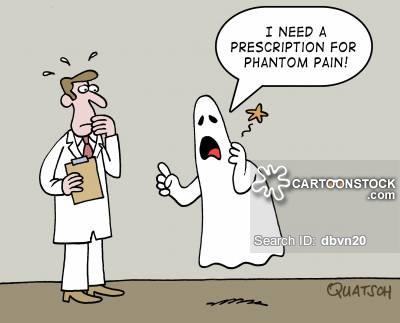With Halloween right around the corner, you can expect some ghosts, ghouls, and a number of other scary creatures to appear this October. However, one particularly spooky health issue has plagued thousands, and doctors are still working to fully understand the ghostly disorder known as: phantom pains.
The Origins
Discovered all the way back in 1551 by a French military surgeon, phantom pains occur when a patient feels pain in an area that has recovered from the major damage. The most common form of this issue is the “phantom limb” which was first discovered by Silas Weir Mitchell. Mitchell discovered that many amputee patients were suffering from intense pain and a sensation of still having their limb attached. It would later be discovered that these phantom pains extended to those who went through a major surgery on other body parts.
What Causes Phantom Pain?
For years, doctors thought that phantom pains were a psychological issue. They viewed this reaction as a form of PTSD where the patient’s mind was still reacting to the pain of losing a limb or undergoing a major procedure. Doctors now believe that this issue originates in the spinal cord and brain. They believe the neurons and connection become confused, creating a sensation of pain and discomfort. If you do come across a patient with phantom pains, be sure to be sympathetic towards them. They most likely cannot control this sensation and often feel helpless when trying to tackle the issue on their own.
A Unique Solution
One solution, discovered by Vilayanur S. Ramachandran, used a device called a “mirror box” to eliminate the phantom pain sensation. In his therapy, patients would look at their attached limb in the mirror box, while trying to relax the phantom limb. Patients reported that their pain and discomfort subsided significantly, and Ramachandran’s method has been adopted by many physical therapists. This might be a solution you and your staff could use to combat these phantom pains.
Phantom pains can be scarier than any monster or ghost you may come across this October, so it’s important to know how to handle it properly. Sympathy and understanding are two key ways to help your patient out, but don’t be afraid to try a few unconventional forms of therapy to help out your patients as well!

